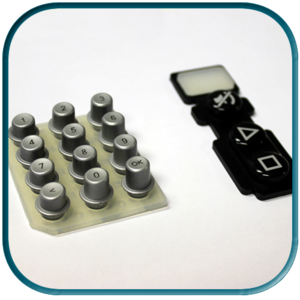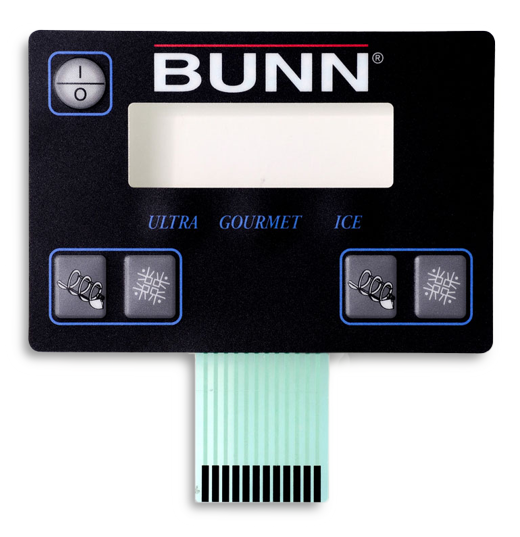Discover the Importance of Membrane Switches in Streamlining Device Controls
Discover the Importance of Membrane Switches in Streamlining Device Controls
Blog Article
The Ultimate Resource on Membrane Switches Over: Layout, Functionality, and Applications
Membrane layer changes function as an intriguing junction of layout and capability, playing a pivotal duty in modern interface across different fields. This resource unpacks the essential parts that add to their effectiveness, including graphic overlays and circuit traces, while additionally clarifying the devices behind their stress activation. As we explore the varied applications of membrane buttons, it becomes evident that their adaptability and sturdiness are essential in settings varying from health care to customer electronic devices. Nevertheless, the subtleties of their layout and operational principles may expose even deeper insights worth considering.

Recognizing Membrane Switches
Membrane switches are a kind of interface innovation widely utilized in numerous electronic gadgets, defined by their thin, versatile design and capability. These switches contain multiple layers that include visuals overlays, sticky layers, and circuitry, enabling a effective and portable user interface for individuals. They can be located in appliances, clinical devices, and commercial control panels, offering a reputable approach for individual communication.
One of the primary advantages of membrane layer switches is their capability to stand up to impurities such as dirt and moisture, making them suitable for atmospheres where durability is crucial. Their low-profile style permits smooth assimilation right into various applications, while the personalized visuals overlays boost individual experience by supplying clear aesthetic responses. In addition, membrane layer buttons can suit a selection of technologies, such as tactile feedback and backlighting, further boosting their use.
The manufacturing process for membrane layer changes commonly includes screen die-cutting, lamination, and printing strategies, making sure precision and uniformity in production. Generally, membrane layer switches stand for a efficient and versatile remedy for contemporary electronic tools, integrating functionality with aesthetic allure in interface style.
Trick Components and Design Components
A variety of vital elements and layout aspects come together to produce an effective membrane button. At the core, the graphic overlay offers both aesthetic and functional functions, offering a straightforward user interface while securing interior parts from environmental factors. The option of products, typically polyester or polycarbonate, affects sturdiness and responsive comments.
Underneath the overlay, the adhesive layer guarantees the button adheres firmly to the substrate, which can be steel, plastic, or glass. The spacer layer is critical, as it keeps the necessary space in between the overlay and the circuit layers, permitting for efficient actuation. Membrane Switches. Circuit traces, typically made from conductive ink or adhesive, are published on an adaptable substrate, allowing electrical signals to be transferred when stress is used
Layout factors to consider also include the plan of tactile domes or embossing that offer physical responses to the user, enhancing the general experience. Furthermore, the design and spacing of the switches should be enhanced for simplicity of use, making certain that users can navigate the interface with ease. Generally, these parts and layout components work synergistically to produce a reliable, functional membrane layer button customized to details applications.
Functionality and Procedure System
At the heart of efficient performance for membrane layer changes exists their functional device, which promotes customer communication through an easy yet efficient style. These buttons operate the concept of stress activation, where an individual uses force to a marked location of the switch (Membrane Switches). This action compresses the layers of the button, finishing an electrical circuit that sends a signal to the connected gadget
The building normally consists of a leading visuals layer, a sticky spacer layer, and a bottom circuit layer, which collectively create a durable user interface. When stress is used, the leading layer collapses versus the bottom circuit layer, enabling conductive traces to link. click to find out more This layout not just makes it possible for clear tactile responses but also guarantees longevity and integrity, as the switches are frequently resistant to dust and dampness.
Additionally, the flexibility of membrane switches over permits for combination with various modern technologies, consisting of LED signs and microcontrollers, enhancing their capability. By offering a structured user interface that reduces mechanical wear, membrane layer changes continue to be a popular selection in applications ranging from customer electronics to industrial devices, guaranteeing optimum performance and customer fulfillment across varied environments.
Kinds Of Membrane Layer Buttons

One more substantial category is illuminated membrane switches, which integrate backlighting to boost presence in low-light problems. These buttons are often made use of in control panels and control panels where clear visibility is vital.
Furthermore, there are customized membrane layer changes made to fulfill particular dimensional, visual, and practical demands. These customizations can consist of special forms, view colors, and formats, permitting seamless combination into various devices.

Applications Throughout Numerous Industries
How do membrane layer switches improve functionality throughout diverse sectors? In the medical market, membrane switches play a vital role in gadgets such as analysis equipment and client tracking systems, where integrity and ease of cleansing are critical.
In the auto industry, membrane buttons are frequently utilized in control panels and control board, providing instinctive controls that enhance motorist safety and security and benefit. The customer electronic devices industry additionally gains from their lightweight and adjustable functions, allowing sleek layouts for smartphones and home appliances.
Additionally, membrane layer switches locate applications in commercial automation, where they add to effective machinery operation and monitoring systems. Their resistance to dirt and dampness makes certain functionality popular conditions (Membrane Switches). Furthermore, the food and drink market uses membrane layer switches for equipment control, where hygiene and longevity are crucial
Final Thought
In conclusion, membrane switches stand for an essential advancement in interface technology, characterized by their unique design and capability. Their key components, consisting of visuals overlays and circuit traces, add to their operational efficiency through pressure activation. The versatility of membrane changes facilitates their application across diverse sectors, from clinical gadgets to consumer electronics. This comprehensive understanding strengthens the relevance of membrane layer buttons in improving product usability and resilience in contemporary technological environments.
Membrane layer changes serve site here as an interesting intersection of layout and functionality, playing a pivotal duty in modern-day customer interfaces across numerous industries.Membrane layer buttons are a type of customer interface innovation extensively utilized in various digital devices, identified by their thin, versatile style and functionality.At the heart of reliable performance for membrane layer switches exists their functional mechanism, which assists in customer interaction via a straightforward yet efficient style. These buttons operate on the principle of pressure activation, where an individual uses pressure to a designated area of the switch.In verdict, membrane switches over stand for an important innovation in individual interface modern technology, characterized by their distinct style and capability.
Report this page